Sushil Chowdhury Sir – My Multi-faceted Teacher
Supriya Chakrabarti, 1974 Electronics & Tele-Communication Engineering
Over the years I have had many teachers – my parents, brothers, wife, friends, relatives, neighbors, my extended family starting with Sardarji – a gentleman and Route 52 bus conductor, shopkeepers, barbers, scout masters, professors, colleagues, authors, politicians and so many more. There is an African proverb – It takes a village to raise a child. I can say with great confidence that in addition to all the teachers from multiple villages I inhabited, the teacher who had the most influence on me and likely on all the boys in the science stream who graduated from Santragachi Kedarnath Institution some 50 years ago was Shri Sushil Chowdhury – our Sir and Netai Babu to all. All of us who were formally taught by him were raised during our formative teenage years by Sir, along with our parents.
Sir was a larger-than-life person in school. He wore his trademark white Dhoti, Punjabi and brought a stern face to school every day along with a black umbrella with a cane handle. Even though he was not our Headmaster, we knew who the real Head Sir of our school was. Outside school, he wore that same stern mask and when we saw him on the street, we would cross to the other side or change our routes altogether. Nobody could tell what misfortune befell on someone who ran into Sir on the street – because we were all on the other side of the road and never made eye contact with him. All that changed after we graduated from school – but, I am getting ahead of me.
We learned how to take notes from Sir during our mathematics class in the ninth grade. That was his regularly assigned subject and that was the first time I met him. During one class he taught us how to take notes the right way: Whatever I write on the blackboard, you copy in your notebook. If I draw a vertical line on the blackboard with some words next to it – your notebook should have a copy of that; if you see a ball on a string drawn on the board, you need to draw a ball on a string in your book.
It was mentioned once, when turning around from the blackboard during one class, Sir, covered with chalk dust, found someone’s notebook closed when the blackboard was full of numbers, equations and sketches (my favorite was the perfect circles and arcs drawn using a handkerchief as his compass). That advice stayed with me throughout my high school years and beyond. Even today my notebooks get covered with scribbles that I cannot read later, neither can any hieroglyphics translator.
I must also pay tributes to my parents, my first teachers. My mother was my influencer taking care all my needs at home; and then some. My father provided study-related technical support. I recall that most, if not all my notebooks were made at home by my father. While coming home from work, he would save the bus fare walking to Howrah Station from his Strand Road office, carrying a shopping bag full of stuff picked up from Barabazar, Howrah Bridge, Howrah Station and possibly from the hawkers on the local train. Each notebook would be made with one dista of foolscap paper, the lined ones for language classes and plain papers for mathematics and other subjects that required sketching. After his evening tea he would wrestle with the paper with a dull needle and a twine thread. In the end, I will have a new notebook, sometimes with a cover made of newspapers and sometimes a light reddish-brown flimsy paper serving as the malat.
Our Sir could teach any subject in the high school curriculum. After becoming a university-level teacher, I now realize that to be his most impressive feat. More than once he disappointed us by not being a typical substitute. Once a group of teenage boys were looking forward to starting mischiefs because our regular teacher of History (or was it English? Difficult to rember after so many years) was absent, and Sir showed up as the substitute. He had no idea what we were supposed to learn that day. He asked one of us what the topic for the day was and went on to teaching the subject as if he had been teaching that class forever.
There were other teachers, but they usually stuck to their subjects. Some wore a similar stern face and looked above everyone’s head, another would have a smile and rode bicycles to school and there were some who would never smile.
An institution’s history that can be challenging for the mathematically inclined.
History has always been a confusing subject for me, but it interested me immensely as I grew older. I have been told in British accent by an elder scholar of space science, when you become interested in the history of science, you are history. With all due respect to the Professor, I am curious about the history of the institution where I met the man of science, who nurtured our minds and produced arguably the best crop of science students in our school’s history and enriched our community.
At the top of the pink-colored main block of our school building (Ramcharan Sett Block) it says KEDARNATH INSTITUTION in white all capital letters. The second line shows ESTD 1925, which makes it a hundred-year-old institution for learning, this year. The All-knowing Wiki informed me that its foundation stone was laid by none other than the Tiger of Bengal Ashutosh Mukherjee on July 17, 1920! So, why do we carry “ESTD 1925” at the top of the building? Apparently, the school did not start “functioning” with its current name – Santragachi Kedarnath Institution, until July 17, 1925. Mystery solved.
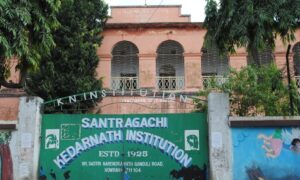
A Coaching Class with a tangible reward.
A good place to learn about our education is at the daily out-of-school private class at our Sir’s house in Chaudhurypara, a neighborhood in Ramrajatala. Every morning, except on Sundays, I went to Sir’s house in Chaudhurypara for coaching class where a group of ten or twelve boys would learn how to solve problems not just from the textbooks, but also those that Sir would pose as the conversation meandered. Sometimes these problems or topics would stray from the planned science subjects – Physics, Chemistry and Mathematics and enter the dreaded domains of languages – Bengali and English. He also taught us Mechanics, a subset of Physics. This was one of two optional subjects we could take and earn some bonus points which would get added to our bottom-line total points, which determined whether you got placed in the First, Second or Third Class – a valuable currency in the college market. It carried even more in the neighborhood and in future nuptial negotiations. The other optional subjects was Biology. Many chose mechanics, because it was “easier to get a higher score” or “you won’t have to memorize so much”. The unspoken reason was that it was the bonus points that determined your street cred. I selected Mechanics and as a result, I never learned even the most elementary concepts in Biology. This gave my two physician brothers unlimited amount of joy speaking Latin or, most likely, Pig Latin, around me and around their patients. To retaliate, I tried to use words of art like speed, acceleration and mass. They both seemed to know much more about these concepts than me.
The fun began during the 11th grade, our final year, in High School. The All-Bengal Teachers’ Association’s (ABTA’s) annual compilation of test examinations – the nightmare inducing, Test Papers – came out at the beginning of the calendar year, barely giving us time to enjoy our Test Exam, typically held in December. It is the last exam in high school and last one designed and graded by our teachers that one had to pass to earn the right to sit for the Higher Secondary Exam. Parents being more worried, visited temples and other places of worship making sure the houses were quieter than an empty library. Solving the problems from the Test Papers was our preparation for this final High School examination. We would go through the problems and also learned the names of the marquee schools – the Hindu School, Ballygunge Government High School, and so many other.
Sir’s coaching classes covered the core subjects for science students, but how to be a decent human being was always in the unwritten curriculum and was taught with examples from life. On the first day of the month we paid Sir our monthly tuition fee of ten rupees. Unless they were on their deathbed, everyone showed up on that day because Samosa and Jalebi were on the menu on those days – Sir’s treat. I cannot remember him being absent or late to school or to the coaching classroom, which was literally 10 steps away from his bedroom. I suppose without fanfare he showed us how to teach teenage boys to be interested in learning with these simple acts of generosity. Well, there was a financial incentive for us as well – a ten-rupee reward for students who did not miss a single day of coaching class during the entire year. Without going to teachers’ training college or business school we got an education on how to motivate people.
Not Scared to see Sir after High School.
My personal interactions with Sir became fewer after leaving school, even though instead of scurrying to cross the road to the other side, I looked forward to running into him on the street. It was an honor to touch his feet publicly on the dusty streets. One of my classmates who has been a constant in my life, would gather a few of us to go visit Sir at his home after Bijoya. He was proud of his students – all of them. His face wore ear-to-ear welcoming smiles, the ones that could not be faked unlike the stern face we saw daily in school. There was always the same inquisitiveness about what each of us were learning. He once summarized engineering in his own inimitable words – mechanical engineering was about things that you could touch, electrical engineering was about things you could feel and electronics? Magic.
With the passing of time the school changed, as it should have. Some good – Sir became the Headmaster for a while. During one of my visits, Sir found out that I learned to play Table Tennis during “the Naxal period” when our college dorms were closed and classed were suspended. He wanted to play me. At that time, I was in my late teens or early twenties and Sir? Well, that is the problem – we did not know much about his personal life, other than what we could see – a confirmed bachelor, a head full of grey hair, a pair of brown-rimmed bifocals with fingerprints or chalk dust and an erect body that leaned forward slowly with time and the heart remained as big as the World. No other teacher ever wanted to join us in the school building for anything other than a disciplinary hearing (well, I lie a bit here – there were always the tug-of-war during the annual sports event in which the teachers participated and a couple of our teachers were also our Scout Masters – but these were the afterschool events). We played a few times – Sir in his trademark Dhuti and me in my chappals. We made more noise from talking about life than the ball doing ping-pong just like two friends! That has been one of the happiest memories of my life in high school. A few of us were boy scouts during our high school days, some reached the highest level – President’s Scout. We learned a quite few things that came in handy at times. The Lord Robert Stephenson Smyth Baden-Powell (yes, we had to memorize his name, even though I did not learn how to spell it until much later), the founder of world scouting movement and who was born in 1857, the same year our school was originally founded, implored – Try and leave this world a little better than you found it, and when your turn comes to die, you can die happy in feeling that at any rate, you have not wasted your time but have done your best.
I know of no boy scout who embodied the principle any better than our Sir, who, to the best of my knowledge, was never formally a boy scout. Nevertheless, our corner of Ramrajatola is a lot better because of the long legacy of Sir. When he left us, he had a lot of reasons to be very happy knowing that he had indeed done his best.
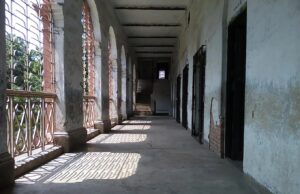
Photo courtesy: Photo Gallery of Santragachi Kedarnath Institution.
A teacher is a compass that activates the magnets of curiosity,
knowledge, and wisdom in the pupils.
– Ever Garrison
*******
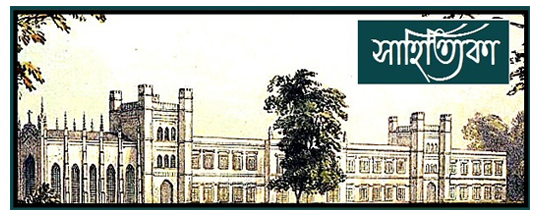
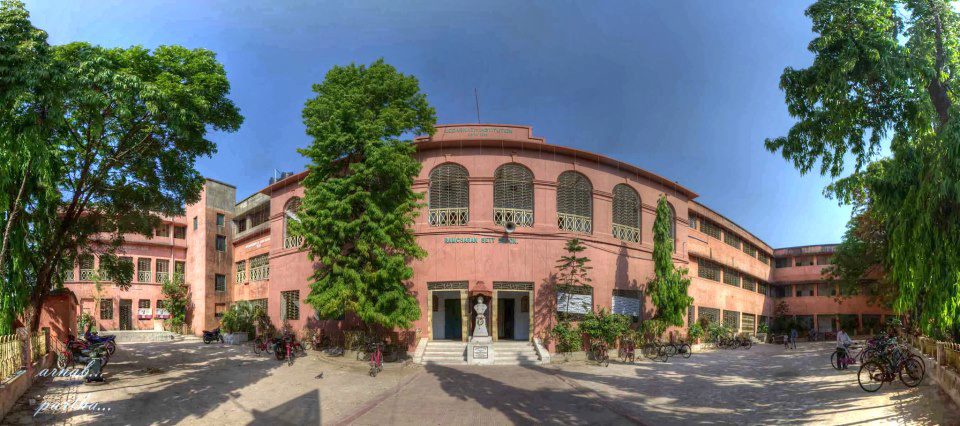

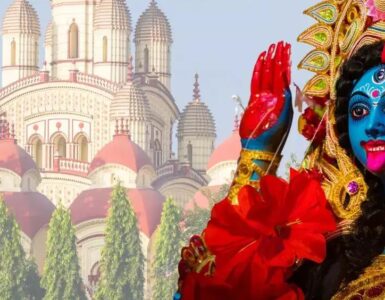
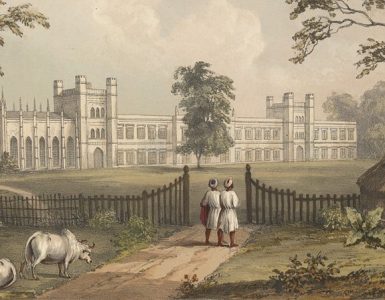









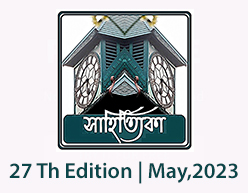
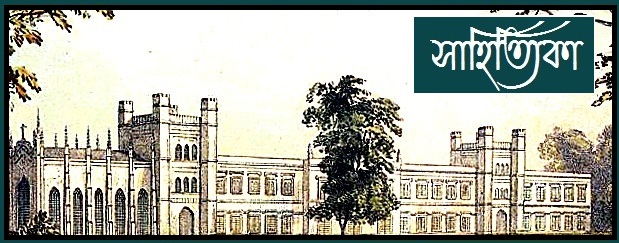
Add comment